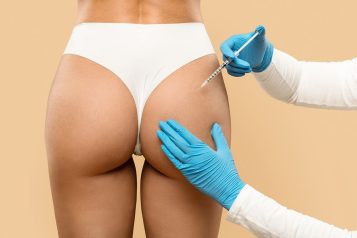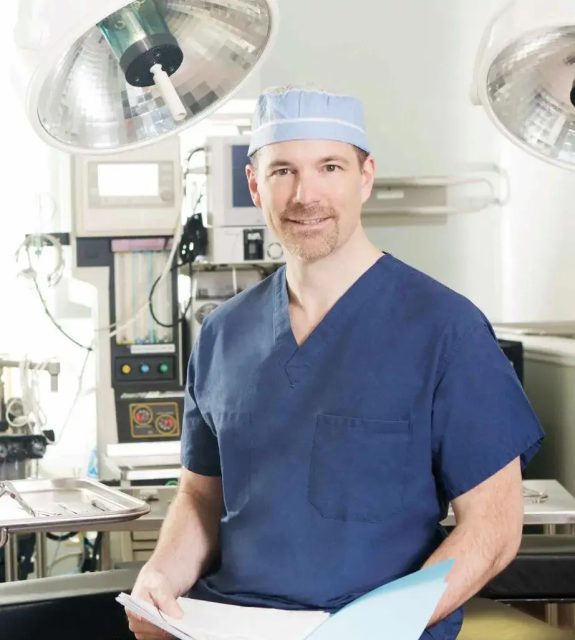 Photo Credit: RomarioIen/Shutterstock
Photo Credit: RomarioIen/Shutterstock
Jade Smith, Noelle Garbaccio, Samuel Lin, MD, FACS
The contemporary standards of youth and beauty are smooth, supple skin and a contoured jawline. To preserve the youthful features of their 20s, many celebrities are turning to baby facelifts, also known as mini facelifts—a subtle alternative to the more invasive, traditional facelifts. In general, facelifts reposition skin, fat, and/or muscle to tighten the face and reduce signs of aging, removing any excess skin or fat. Unlike threadlifts, which lift skin but do not remove the excess, facelifts achieve a more lasting and natural rejuvenation.
Full facelifts are distinguished from mini facelifts by 1) parts of the face treated, 2) amount of area of facial dissection, and 3) recovery time. A full facelift is designed to address moderate-to-severe skin laxity and jowling in the midface, lower face, and neck. By manipulating multiple layers of tissue—skin, fat, and muscle—full facelifts create a dramatic result that lasts 10-15 years. The surgery typically requires general anesthesia, and the scar starts in the hairline at the temples, reaches around the ears, and extends to the back of the scalp. The recovery time is long: most people return to work in two weeks, and the face will feel “normal” again after two to three months. According to RealSelf, an online patient community for plastic surgery, the average reported price of a full facelift is $16,465, though costs range from $10,000 to more than $35,000.
Mini facelifts offer a more targeted approach, treating mild-to-moderate skin laxity in the lower face only. The procedure can be done under local anesthesia, making the surgery quicker and less invasive than a full facelift. The surgeon makes small incisions around the ears, pulls the skin taut, and then removes the extra tissue. Because the incision is so small, the effect is subtle. Mini facelifts are, therefore, appropriate for early signs of aging around the mouth, jawline, and sometimes the neck. Unlike full facelifts, mini facelifts cannot reposition deeper facial planes, so the effects are shorter-lived at 5-10 years. However, some patients may consider this a worthy trade for a mini facelift’s short recovery and cheaper price. Affectionately referred to as the “weekend” facelift, mini facelifts allow most patients to return to work within one week after surgery, and the face feels “normal” after about one month. The average reported price tag is $10,129; costs vary from $4,000 to over $28,000.
Ultimately, the best choice depends on the patient’s aesthetic goals. Older patients with prominent wrinkles, jowls, and sagging skin in the midface require full facelifts for noticeable rejuvenation. Young patients with early signs of aging may prefer the mini facelift for its small scar and subtle effect. The mini facelift is best suited to patients in their 30s to 40s as a preventative measure against age-related changes. For patients who use fillers and botox, mini facelifts can achieve similar effects with less maintenance– although a mini facelift won’t affect crow’s feet. Patients as young as their 20s are getting mini facelifts, preferring a subtle lift over the upkeep of dermal fillers. After any type of facelift, skin still ages normally, so skincare and sun protection are vital to preserving results, and repeat surgeries are needed to correct new drooping in the future.
Mini facelifts are behind many of social media’s most coveted faces, for whom the understated effect and fast recovery are invaluable. Celebrity Kylie Jenner, 27, is rumored to have a mini facelift, hinted by photos of skin-tethering around her ears. Singer Courtney Love confirmed she underwent a facelift at age 35. The “Real Housewives of Orange County” star Emily Simpson was watching reruns when she realized her once-sharp jawline had faded, so at age 46, she restored the contour of her neck and lower face with a mini facelift, praising the results as “meticulous and top-tier work.” Although Tom Brady and Jennifer Lopez have denied any cosmetic surgeries, rumors persist that they, too, have undergone mini facelifts.
The choice between a full facelift and a mini facelift ultimately depends on individual aesthetic goals, the extent of aging, and personal preferences for recovery and cost. As society embraces a broader range of cosmetic options, these procedures cater to distinct age groups and lifestyle needs, from preventative measures to comprehensive rejuvenation.
For more information, visit Dr. Samuel Lin's social media:





















